For your car to drive smoothly and safely, many components must operate together in perfect harmony, and your wheel bearings are among the most important of such components. Nevertheless, a failing wheel bearing can cause serious safety hazards and expensive repairs if unattended. This is why the signs of faulty wheel bearings should be known in advance so that any possible accident on the road can be avoided. Thus, know what these signs are as you read through this article on 10 major symptoms of a bad wheel bearing, which will provide useful information for all drivers on how to solve this problem immediately and save their cars from damage. Whether you’re hearing unfamiliar noise or noticing altered car handling, knowledge of these warning signals is an essential part of every safe driving experience you have with your vehicle.
What are the most common symptoms of a bad wheel bearing?
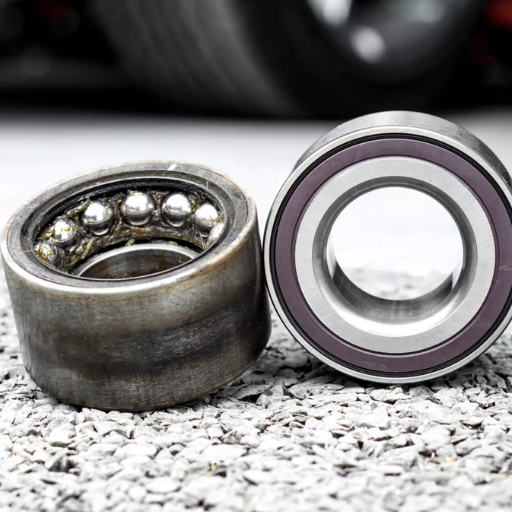
Bad wheel bearings emanate unusual sounds like grinding/humming/roaring from wheels, irregular tire wear, vibration in the steering wheel as well as a conspicuous drift to one side during driving. Besides, you might notice less control of the vehicle, too much play at the wheel, or a burning smell around the tires. In any case these symptoms, it is very important that you have your car checked and repaired immediately so that it will not cause other complications on the road, putting your life in danger.
Unusual noises: grinding, humming, or whirring
Based on what I have seen, extraordinary sounds such as grating, buzzing, or buzzing noises are a sign of bad wheel bearings or other interconnected parts. They are usually heard when the vehicle is moving particularly while making turns at high speed. Hence, whenever you hear this kind of sound from your car, it is important to fix it immediately rather than ignore it, which will cause more and worse conditions in either the drive train or suspension system of your car. By spotting the problem early enough, you will avoid costly repairs and still keep your vehicle out of danger, thus maintaining its safety and performance.
Steering wheel vibrations and looseness
When your steering wheel shakes and is loose, it can be quite alarming. As a professional who has worked in the industry for a long time, I can tell you that these are usually indicators of certain problems that need to be fixed. Let’s take this one step at a time:
- Wheel Alignment: Another major cause of steering wheel vibrations is wheel misalignment. Your tires may be misaligned which will lead to uneven tire wear and in particular, a vibrating steering wheel may become more noticeable during high speed driving.
- Tire Balance: Tire balance is another major factor. When tires are not balanced appropriately, their rotation becomes irregular, leading to vibrations that you can feel at the steering while driving. This happens mostly within certain speed ranges.
- Suspension or Steering Components: The worn out suspension or steering components like tie rods and ball joints might cause the steering wheel to shake or feel loose. These parts ensure accurate steering and should be checked regularly.
- Brake System Issues: In case there are pulsations felt on the brake pedal during application, then you are likely dealing with warped rotors or drums from front to rear wheels respectively. Uneven contact between pads and rotors is transmitted as pulses or vibrations in your steering column.
- Wheel Bearings: Vibrations accompanied by looseness in the steering could also arise from loose or damaged wheel bearings. This sometimes comes along with grinding sounds or humming noises while driving around.
In case you’re feeling these signs, I’d advise commencing with an in-depth assessment of those constituents. Tackling the cause right away will ensure that your car remains secure, cozy and economical while traveling!
Uneven tire wear and ABS system malfunctions
Tire uneven wear and ABS system failures can be due to underlying problems in the suspension, alignment, or braking system of a vehicle. In my experience, the cause of tire wear difference is mostly misalignment, wrong tire pressure, and worn-out suspension elements. These factors may result in tires wearing abnormally, thereby decreasing their lifespan and potentially influencing handling. Conversely, ABS malfunction is often caused by faulty wheel sensors for speed, damaged wiring,g, or a failing ABS control module. From what I know, they are both things that should never be ignored because they can compromise safety and affect the performance of a vehicle. For a lasting solution that will help you to know where exactly the problem is located, you had better have professionals examine your car for faults.
How does a failing wheel bearing affect your driving experience?

Your driving experience is significantly affected by a bad wheel bearing in several ways. One of the first things you will notice is that there are and I would say that this is a huge red flag–unusual noises such as humming, growling, or even grinding. Besides, you may feel like the handling of the vehicle feels unstable, especially when making turns, and you might sense excessive vibration through the steering wheel or floor. If these symptoms are ignored, more serious problems can occur, including uneven tire wear and, in worst cases, even total wheel failure. This has always been my advice: take care of a failing wheel bearing immediately for safety purposes and good ride quality.
Increased steering difficulty and reduced control
Increased steer difficulty and loss of control are usually indications that the steering or suspension system has developed a problem. From my own background, here are the notable aspects to investigate:
- Wheel AlignmentAdditionally, they may cause hard steering as the tires are not in sync. This can also lead to the car pulling to one side thus compromising your overall control.
- Power Steering System Effort while turning the wheel can increase as a result of power steering fluid leakage or defective pump. While steering, ensure that the fluid is within limit and listen for any strange sounds.
- Tire Pressure –Consequently, when under inflated or unevenly inflated they create resistance which makes your car difficult to steer. Please always observe tire pressure frequently and ensures its within manufacturer specifications.
- Suspension Issues –Also these worn-out or damaged suspension components like tie rod ends and ball joints will result into poor stability especially when negotiating sharp corners. Since they link directly with wheels, their condition should be perfect for proper control.
- Wheel Bearings –
See, worn out wheel bearings severely affect vehicle handling and steering response. In case you hear sounds of humming or grinding inspect these parts instantly.
Should you experience such symptoms, I suggest you address the problem as soon as possible because driving with a compromised steering system can be dangerous and costly in the long run. When in doubt, always consult a reliable mechanic to determine which factors are responsible for your car’s misalignment.
Compromised vehicle stability, especially during turns
I have found out through my own experience that when a vehicle’s stability is compromised, it can be due to worn-out or broken components of suspension, tires that wear unevenly, or wheel bearings stopping. In case any of these problems manifest even during the turns, the car will seem unstable and unpredictable, thereby increasing the chances of losing control. From my experience I have learned that it is worth checking suspension systems and aligning tires properly because it helps in maintaining stability. When drivers notice unusual swaying, vibrations, or difficulty handling corners smoothly, they should immediately identify the cause to prevent further complications or endangerment.
Potential damage to other components like CV joints and axles
My experience would suggest that problems with suspension or alignment can ultimately affect other vital parts such as CV joints and axles. In the event that suspension does not work well, it stresses these parts excessively and causes them to wear out fast, resulting in damage. One of them is extended misalignment which makes the CV joints function at wrong angles thereby increasing friction and reducing their lifespan. Fixing suspension issues early saves on expensive repairs of linked mechanisms and enhances stability when driving.
Can you drive a car with a bad wheel bearing, and for how long?
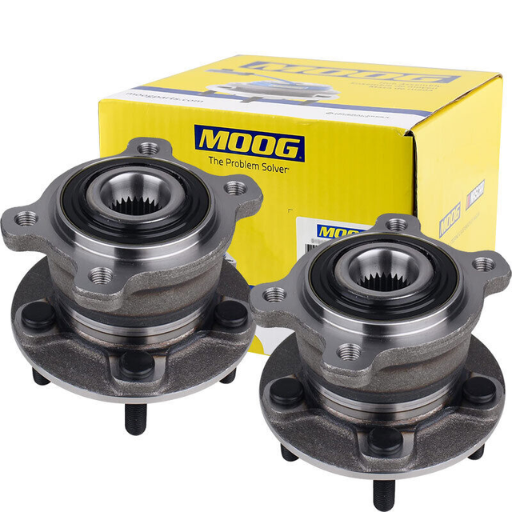
You really shouldn’t be driving with a bad wheel bearing. Your vehicle might still move, however a faulty wheel bearing will undermine safety, as well as the handling and performance of your car. It creates too much heat and friction that can wear down other components like the hub, axle, or even wheel. If you take it in technical terms, you may drive for some short distance, but that’s just playing with fire because continuing to do so is risking full failure, which can result in a loose wheel or accident. Suspecting a weak wheel bearing, rather than exposing yourself and other road users to further risk, I would recommend you fix the issue immediately.’
Short-term driving risks and limitations
driving on a wheel bearing that’s gone bad, even for a short distance, is just not worth it. The risks far outweigh any potential benefits. However, if you are in a situation where you must drive for a short distance, there are certain important things to consider:
- Noise Levels – That is a sure sign of major damage if the wheel bearing produces a grinding or growling sound. Continuing to drive can lead to total seizure of the bearing resulting in wheel lock up.
- Temperature –A defective wheel bearing causes excess friction hence producing too much heat. The surplus heat can soon spread out to other components around such as the hub, brake rotors and axle leading to more serious destruction. When you smell burning or feel extreme heat coming from the wheel, pull over immediately.
- Wheel Play –Be wary of any movement within the wheel. In case it wobbles or seems unsteady while driving, it is not safe to go on. This kind of instability may cause your tire to come off when you are on the road which is very risky.
- Speed Limitations –It’s best to keep your speed as low as possible should you decide to drive at all. The use of high speeds tends to put additional force on an already damaged bearing thereby hastening its degeneration.
- Distance – Stick only to a short distance until you get somewhere safe enough or take your car for repairs if necessary. The longer the drive, then the higher likelihoods for sudden catastrophic failure.
The best way to stay safe is by promptly replacing a bad wheel bearing. Driving in such a state not only endangers your car but also yourself and others on the road. It’s better to nip it in the bud in case you suspect anything, than waiting for a major fault later on.
Long-term consequences of neglecting wheel bearing issues
wheel bearing problems, when ignored, can turn out to be quite expensive and risky in the end. Such a wheel can eventually damage your tires due to wear and tear, misalignment, or even the suspension system of your car. This increases repair costs and, at the same time, makes driving unsafe by compromising handling and stability. Unluckily, in some instances, seized wheel bearings can lead to you losing control over your wheels, hence increasing your chances of getting involved in accidents. Addressing these issues speedily is not only about maintaining your vehicle but also ensuring that you are safe and protecting others, too.
How do you diagnose a bad wheel bearing at home?
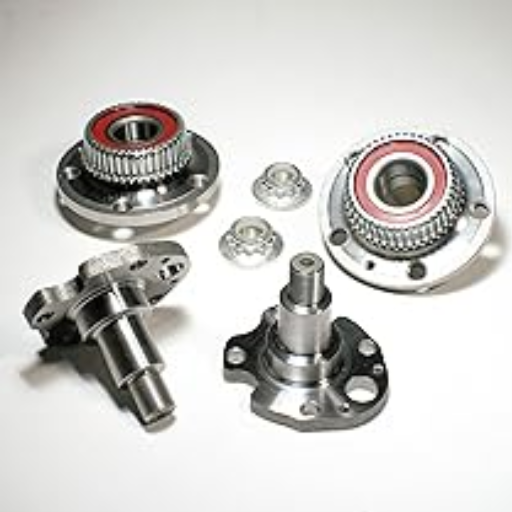
It is much easier than you may think to identify a problematic wheel bearing at home, and by simply paying attention to the details, you can identify the problem in an early stage. In order to begin, I would suggest listening for any strange sounds while driving; this is what will help to establish whether your guess on whether there is a bad wheel bearing is common. Frequently a bad wheel bearing results in growling, humming or grinding sound that becomes louder when you speed up or turn. Then it’s time to check for any play in wheels. While holding the car’s wheel securely above the ground, place your hands on its top and bottom parts and then jiggle it back and forth. This may suggest bearing wear if there is excessive movement. Lastly, spin the tire manually and feel for vibration or uneven resistance. And if anything feels wrong with it, take care of it before things get worse! However, these steps only make a great beginning point; always put safety first, as well as contact someone who specializes in this area whenever unsure of what needs to be done next.
Visual inspection techniques for wheel hub and bearing
the most important thing for proper inspection of wheel hubs and bearings is being attentive and conducting step-by-step checkups. To begin with, I inspect the hub assembly closely to look for any visible defects in it like cracks, corrosion or wear marks. Then, I concentrate on the bearing seal: signs of leakage or tears are a red flag. Besides that, brake system and suspension problems can indirectly affect hubs and bearings; therefore, everything around should be considered for a meticulous evaluation. This way, nothing crucial is missed by ensuring early warning signs before they become expensive diagnoses are caught.
Simple tests to check for play in the bearing
To check for bearing play, I begin by lifting the car safely such that one wheel is off the ground. First, I hold the tire strong enough to rock it back and forth using my hands at 12 o’clock and 6 o’clock. Finally, I wobble the tire gently from side to side. It should be firm with no movement in a good bearing. Lastly, I repeat this procedure with my hands at 9 o’clock and 3 o’clock positions while keenly watching out for any looseness or strange noises. Any play detected or clicking sounds may show wear on bearings or their surrounding parts. These simple tests are quick but beneficial in detecting possible problems
Using sound to identify wheel bearing problems
In ascertaining wheel bearing difficulties using sound, I depend on distinct auditory pointers. In some instances, a bad bearing will often give off growling, humming, or rumbling sounds, which increase with the speed of the vehicle. To know the specific wheel that has been affected, one can listen for changes in pitch during turns—usually, there is louder noise at one side of a car than on the other when it is turning indicating an issue with the opposite bearing. However, sometimes rhythmic clicking or snapping sounds may also occur, especially during turns. It is very important to pay attention to these noises as they help diagnose early problems and mitigate any further damage to the wheel assembly and other parts.
What causes wheel bearings to go bad prematurely?
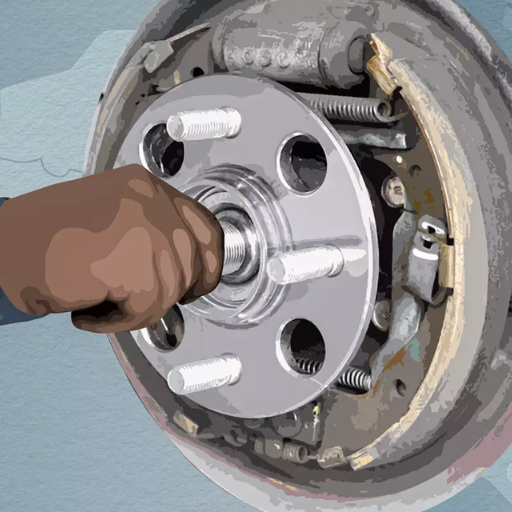
Wheel bearings can fail prematurely for many reasons, and I have come across most of them in my experience. The most frequent problem is contamination – water, dirt, or other particles may infiltrate the bearing, resulting in the breakdown of grease lubrication and excessive wear. More so, using the wrong tools or improper installation will cause damage to the bearing, such as misalignment or uneven pressure on it. Overloading a vehicle and driving it under extreme conditions like potholes, off-road terrains, and extreme heat, among others, can hasten this failure. Cheap bearings and not servicing them properly may also worsen the situation. You can extend your wheel bearings’ lifespan considerably by addressing these causes as well as staying ahead of issues directly affecting them.
Impact of driving conditions and vehicle maintenance
The life span and performance of wheel bearings depend on the state of driving as well as vehicle maintenance. Among the conditions that can worsen the situation are such ones as rough terrains, which means uneven surfaces, extreme temperatures and potholes. Equally, if one does not maintain his or her vehicle properly by checking for correct lubrication as well as failure in observing wear signs, it may cause premature failure. To avoid these situations, inspections should be done regularly so that the use of quality bearings is possible and threats related to driving can be reduced. Thus, taking proactive measures not only guarantees the long-lasting life of wheel bearings but also ensures vehicles are safe and energy efficient.
Manufacturing defects and quality issues
From my expertise as an expert in the industry, I can attest to the fact that wheel bearings’ performances are significantly affected by the presence of manufacturing defects and quality issues, even though they rarely happen. Such errors mostly emanate from inconsistencies in the production process, such as poor materials, inadequate machining, or insufficient heat treatment. If wheel bearings are not made to exact specifications, they tend to undergo fatigue, break, or fail prematurely. This underscores the significance of sourcing from trusted manufacturers who enforce stringent quality checks. By giving preference to superior manufacturing norms, we will have dependable parts that can last for long and endure tough applications.
How much does it cost to replace a bad wheel bearing?
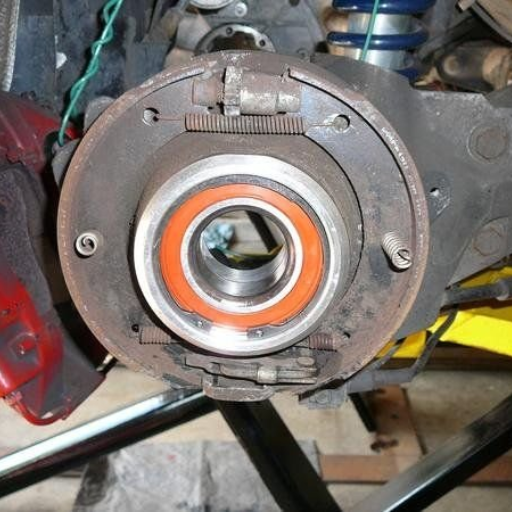
The price for changing a damaged wheel bearing can differ as it depends on a few things, e.g., the kind of vehicle, labor charges, and whether you are replacing a hub assembly or just one bearing. Usually, this will cost from $150 to around $500 per wheel, and labor costs make up a considerable part of the total. Based on my own experience, it is vital to locate top-quality replacement parts if you want something that will last over time and perform well. It’s tempting to go for cheaper parts but choosing reputable brands saves you future problems and more costs.
Factors affecting wheel bearing replacement costs
The numerous aspects that determine the average cost of replacing a wheel bearing can be factors within your control. Let me break Decipher: The aspects that are most important.
- Make and Model of the Vehicle
Different automobiles require different types of wheel bearings. High-end cars, performance vehicles, or rare models may need specialized or higher quality parts that can raise the price tag significantly. Moreover, certain automotives exhibit intricate hub assemblies which are more time consuming and call for expertise during replacement.
- Labor Costs
The rates charged by mechanics vary greatly depending on your location and which auto repair shop you select. For example, hourly rates in urban areas or at dealerships might be higher compared to those at small independent shops. Labor costs may also rise further if it takes longer to replace the wheel bearing because of its inaccessibility.
- Type of Replacement
While some car models allow only the bearing alone to be replaced; others require changing the whole hub assembly. The most expensive is hub assembly replacement, as it involves a number of components which are combined into one unit.
- Quality of Replacement Parts
The cost of the wheel bearing itself depends on its quality and brand. Going for well-known brands normally gives long-lastingness and dependability while going for cheaper ones may save money at hand but result in early failures that could prompt extra expenses on repairs.
- Condition of Surrounding Components
When replacing wheel bearings, technicians also look into the state of other related parts like spindles, axles, or wheel hubs. In case any of these parts are worn out or damaged, a mechanic has to replace them thus increasing the entire cost.
- Driving and Environmental Conditions
If a vehicle is being driven under harsh road conditions such as potholes, extreme weather, or with heavy load it can cause increased wear on the wheel bearings. This means replacement process might be more intricate thereby impacting costs.
DIY vs. professional replacement: pros and cons
it all really comes down to what tools you have access to and what your skills are like, from my experience in this industry. If you have the necessary tools, you can remove wheel bearings and save on labor costs, but it requires an immense amount of focus, patience, and the proper tools. Making mistakes while doing this could complicate matters or could cost more to fix later. Professional replacement, however, guarantees that the task will be accomplished with the appropriate care and expertise and that it will usually be covered by insurance. Many people prefer to do things on their own, as long as they know the ins and outs of a job, but for any especially difficult tasks, I always advise seeking expert assistance. I believe safety and reliability never need to be sacrificed.
What happens if you ignore a failing wheel bearing?
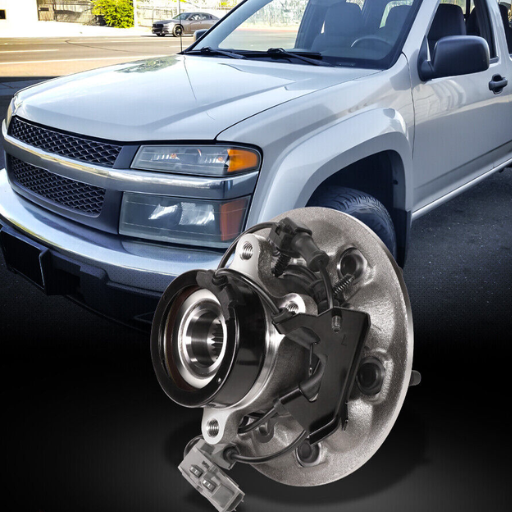
If you don’t pay attention to a bad wheel bearing, it can lead to some terrible consequences not only on your life but also on your money. Gradually, a spoilt wheel bearing will deteriorate, causing increased friction, heat, and wear on the surrounding parts like the hub and axle or even the suspension system. You may notice that there is uneven tire wear, unusual sounds, or poor vehicle handling. With time, the wheel may lock up or completely fall off, thereby creating a hazardous situation for road users. In my professional opinion, not taking care of this will expose you as well as others to risk while at the same time leading to expensive repairs that could have been avoided with prompt action. Take my word for it; fixing an impending wheel bearing failure early enough is always a prudent decision.
Safety risks and potential accidents
The safety risks associated with a failed wheel bearing cannot be overemphasized, at least in my eyes being an expert in the field. When your car’s wheel bearing fails to function well, it causes danger to the integrity of the whole wheel assembly. This can result in catastrophic failures such as wheels falling off while driving at high speed or decreased handling, which enhances the chances of accidents occurring. On several occasions, I have come across cases where drivers and their passengers were exposed to dangerous conditions due to ignoring warning signals like grating sounds and trembling sensations. However, this is not just about your vehicle but also about people’s lives; hence, you must act immediately.
Escalating damage to other vehicle components
neglecting a worn-out wheel bearing will not only wear that specific component but will also result in a cascade of damage to your whole car. The wheel spreading additional pressure to the suspension system, axle, and tires over way too long is obnoxiously dangerous as well. The added stress would, over time, result in excessive wear, misalignment, and increased friction, leading to a massively inflated repair cost. I have come across cases where not focusing on a relatively small important electrical component resulted in total failure of the vehicle axle, putting the driver in thousands of dollars in repair. Solving the mechanical problem allows one to not lose money and instead make sure the vehicle is running in top condition.
Reference
- Kelley Blue Book: Bad Wheel Bearing – Signs and Symptoms
- SKF Vehicle Aftermarket: Symptoms & Signs of a Bad Wheel Bearing
- Family Handyman: Bad Wheel Bearing Symptoms
Frequently Asked Questions (FAQs)
Q: What are the common symptoms of bad wheel bearings?
A: Common symptoms of bad wheel bearings include unusual noises such as grinding, humming, or whirring, especially when turning or at higher speeds. You may also experience vibrations in the steering wheel, uneven tire wear, and a feeling of looseness or play in the wheel area.
Q: How can I tell if my wheel bearing is bad while I’m on the road?
A: If you’re on the road and suspect a bad wheel bearing, listen for a humming or growling noise that changes pitch as you accelerate or decelerate. You might also feel vibrations through the steering wheel or notice your vehicle pulling to one side. In severe cases, you may hear a loud grinding noise or experience unstable handling.
Q: What does wheel bearing noise sound like?
A: Wheel-bearing noise often sounds like a continuous humming, growling, or grinding. The sound may increase or change pitch as you accelerate, decelerate, or turn. In some cases, it might resemble a squealing or chirping noise, especially when the bearing is just starting to wear.
Q: Can a bad wheel bearing trigger the ABS warning light?
A: Yes, a failing wheel bearing can trigger the ABS (Anti-lock Braking System) warning light. This is because the wheel speed sensor, which is often integrated into the wheel bearing assembly, may provide inaccurate readings due to the faulty bearing, causing the ABS system to malfunction.
Q: What are the consequences of ignoring bad wheel-bearing symptoms?
A: Ignoring bad wheel-bearing symptoms can lead to serious consequences. As the bearing wears further, it can cause uneven tire wear, damage to the CV joint or strut, and in extreme cases, wheel separation from the vehicle while driving. This can result in a loss of control and potentially dangerous accidents.
Q: How often should wheel bearings be replaced?
A: Wheel bearings are designed to last the lifetime of the vehicle, but various factors can cause them to wear prematurely. On average, wheel bearings may need to be replaced every 85,000 to 100,000 miles. However, it’s important to have them checked regularly during routine maintenance and replace them as soon as you notice any symptoms of failure.
Q: Can I drive with a bad wheel bearing?
A: While you may be able to drive short distances with a bad wheel bearing, it is not recommended. A faulty wheel bearing can cause significant damage to other components and potentially lead to wheel separation. If you suspect a bad wheel bearing, it’s best to have your vehicle inspected and repaired as soon as possible to ensure your safety on the road.
Q: How much does it cost to replace wheel bearings?
A: The cost to replace wheel bearings can vary depending on the make and model of your vehicle, as well as labor rates in your area. On average, you can expect to pay between $200 to $800 per wheel for bearing replacement. Some luxury or performance vehicles may cost more. Keep in mind that replacing wheel bearings often requires special tools and expertise, so it’s typically best left to professional mechanics.
